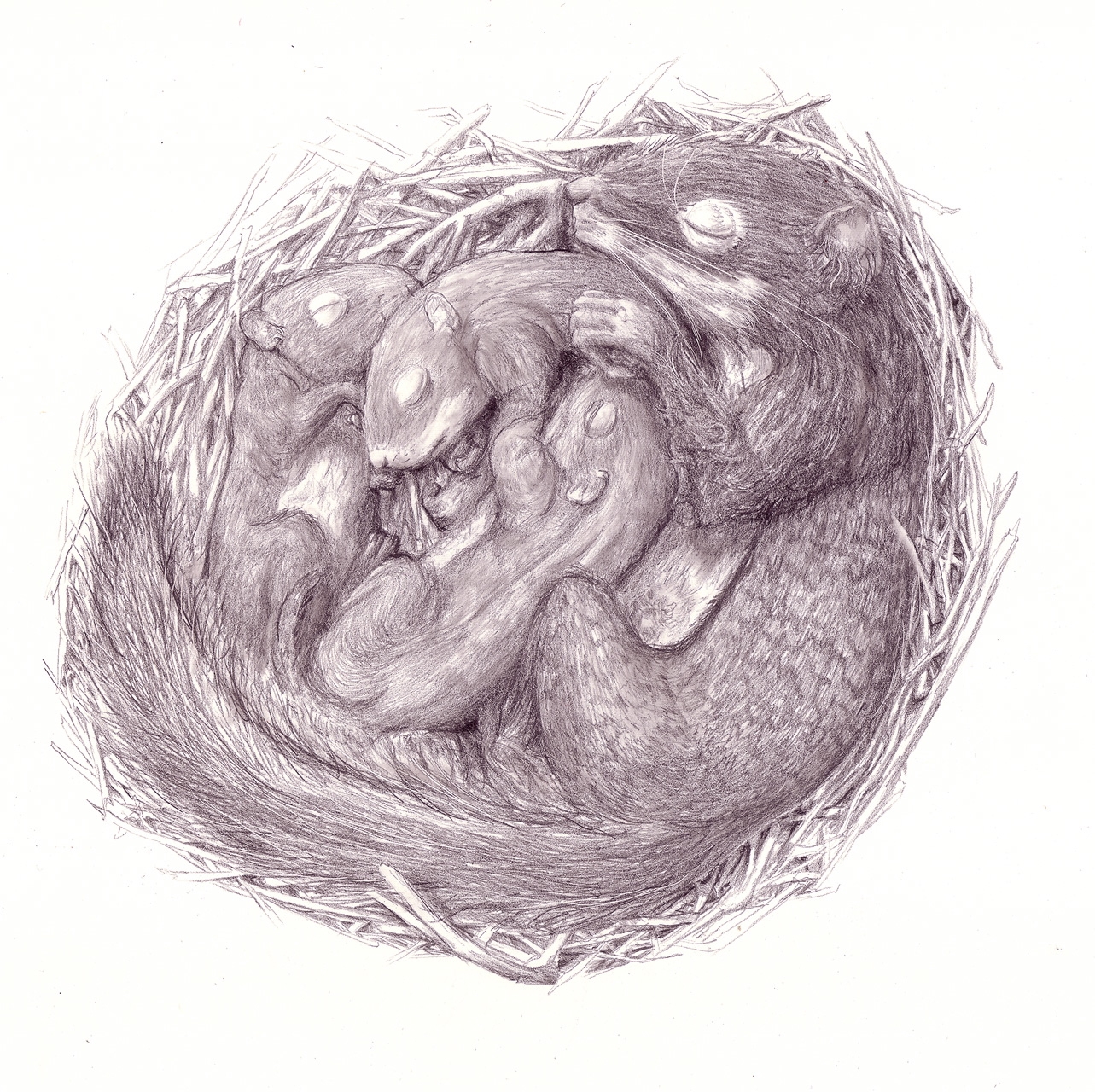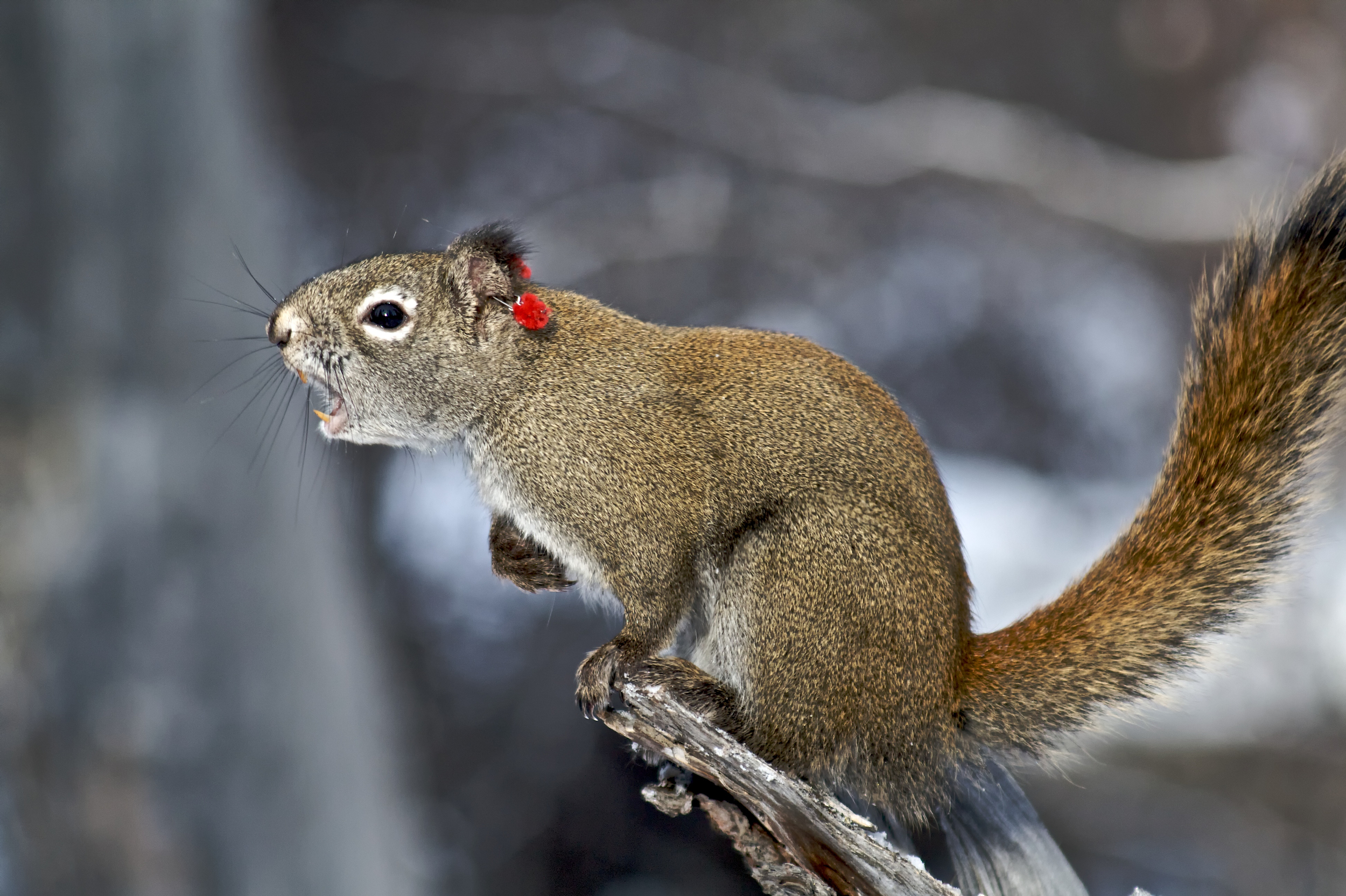Maternal Effects
Mothers make many important contributions to the development of their offspring. In lab rodents, differences among mothers in their behaviour toward offspring has been shown to have many important consequences for offspring development, physiology and behaviour. Mothers can also use environmental cues to adjust offspring attributes to match the selective environment that offspring will experience before the offspring experience the environment directly. This form of phenotypic plasticity is referred to as transgenerational phenotypic plasticity. Finally, maternal effects on offspring can themselves be genetically based. In this case, maternal genes can contribute to the evolutionary dynamics of offspring traits. These indirect genetic contributions to evolutionary change can not only affect the rate of evolution but they can also introduce evolutionary time lags in which the rate of evolution is also affected by selection in the previous generation.
Our lab is interested in all three of these important aspects of maternal behaviour. First, we have quantified maternal behaviour in wild deer mice (Peromyscus maniculatus) following standard protocols for lab rodents (Stewart and McAdam, 2014). By temporarily bringing females and their pups into captivity we can quantify maternal behaviour following standard protocols for lab rodents, but can then assess the fitness consequences of differences in maternal behaviour by releasing mothers and offspring back into the wild. We are interested in the hormonal causes and consequences of variation in maternal care as well as how balancing selection might maintain variation in maternal behaviour in the wild.
Second, we have been studying how mothers can respond to environmental cues of natural selection to adaptively adjust offspring phenotypes. The invasive zooplankton, Bythotrephes longimanus, uses water temperature as an indirect cue of gape-limited fish predation, inducing longer protective tail spines in offspring when the risk of gape-limited predation is higher (Miehls et al. 2013). Red squirrels assess local population density by listening to the territorial vocalizations of their neighbours and adaptively increase offspring growth rates when population density is high (Dantzer et al. 2013). Squirrels do this through elevated levels of maternal stress hormones (Dantzer et al. 2013).
Finally, we have been interested in how genetically based maternal effects might affect evolutionary dynamics. Maternal effects on offspring growth rates are very high in red squirrels and the genetic basis to these maternal effects make important contributions to the evolutionary potential of this offspring trait (McAdam et al. 2002). Furthermore, evolutionary changes in offspring growth rates show evidence for both fundamental predictions of models of maternal effect evolution: 1) the rate of evolution is affected by maternal genetic effects, 2) there is an evolutionary time lag where current evolution depends on natural selection in the previous generation (McAdam and Boutin 2004). More generally, we have quantified the magnitude of maternal genetic effects on fitness, which are far more important than direct genetic effects in determining the adaptive potential of our red squirrel population (McFarlane et al. 2015).
RESPONSES TO SOCIAL INFORMATION
Despite the defence of exclusive territories and very infrequent physical interactions with neighbours (Dantzer et al. 2012), red squirrels communicate regularly with their neighbours through territorial vocalizations, called rattles. Acoustic information contained in the rattles of neighbours, therefore, has the potential to provide important information about the local social neighbourhood without direct physical interactions. We have only begun to explore the importance of social communication in red squirrels. We know that red squirrels use rattles to assess local population density and adaptively adjust offspring traits in response to these social cues (Dantzer et al. 2013). In addition, we have found evidence of heritable variation in the acoustic properties of the calls (unpublished data), which provides the basis for kin recognition based on phenotype matching. We have found evidence of kin recognition based on the behavioural responses of red squirrels to playbacks of rattles (Wilson et al. 2015), although this appears to be context-dependent (Shonfield et al. in review). Red squirrels also adopt orphaned neighbours only when they are kin (Gorell et al. 2010) and when communal nesting occurs during winter, it is typically between relatives (Williams et al. 2013). Red squirrels, therefore, have a much richer social environment than we would expect from this ‘asocial’ species. The fact that most social information is communicated through territorial vocalizations, which we can quantify acoustically, manipulate and broadcast experimentally in playbacks (Dantzer et al. 2013, Wilson et al. 2015), provides a potentially powerful yet simple wild system for exploring the ability of individuals to adaptively respond to changes in their social environment.
We are currently studying how red squirrels adjust their territorial behaviour in response to the composition of their social environment and how individuals in the social environment affect an individuals attributes and fitness.


